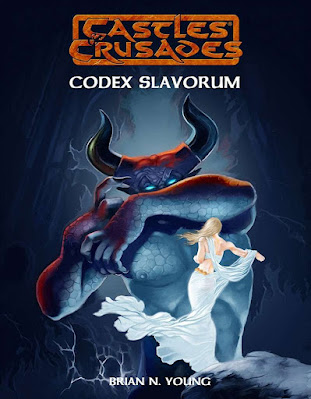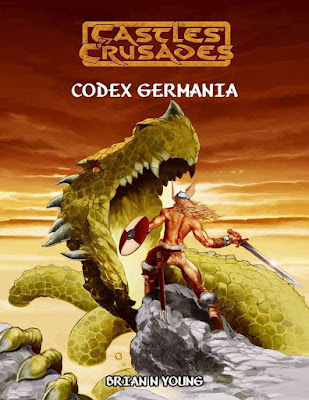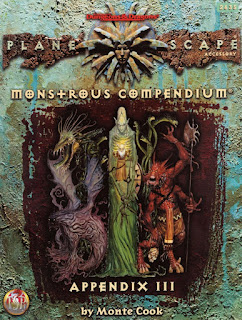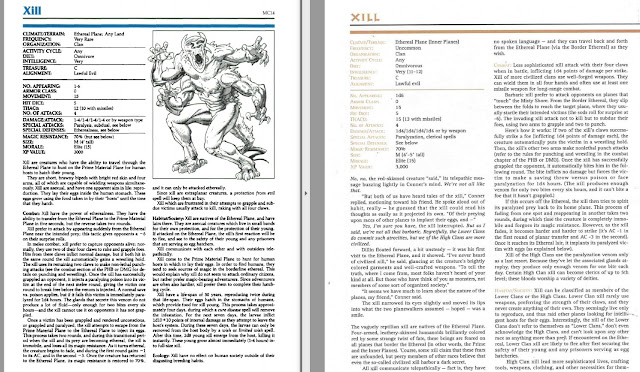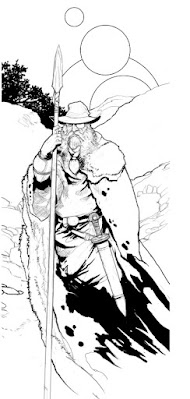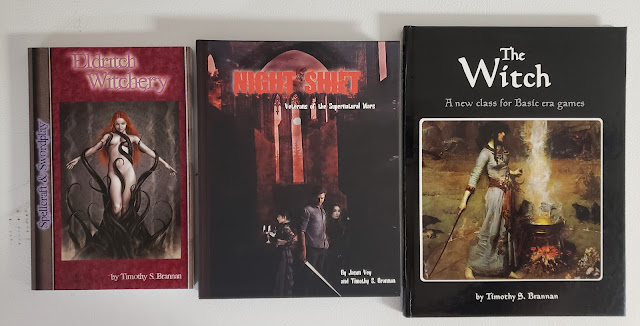Stephen Canner / March 8, 2022

From the opening years of the 1950s, various terrestrials came forward claiming to be in contact with the occupants of flying saucers. Their stories were often quite similar. The discs usually came from our own solar system: Venus, Jupiter, or Saturn. Communication was sometimes accomplished via telepathy, sometimes verbally. Perhaps most importantly, the aliens were portrayed as “perfect” specimens of Homo sapiens, although this ideal was almost always a suspiciously Northern European one. Dressed in crisply tailored ski wear, they preached pacifism, universal love, and a cosmic version of the perennial philosophy. A fundamental disagreement over economic theory coupled with the recent discovery of atomic weapons may have driven humanity to the brink of self-destruction, but there was no reason to fear. The “space brothers”—along with a few space sisters—had arrived in their saucers to show us the true path.
Early contactees such as George Van Tassel, Daniel Fry, and George Adamski appeared before microphones, in television studios, and in front of movie cameras, with claims that seemed more like something from the pages of a pulp magazine than from any consensus reality. Even by the standards of the era their tales were simplistic, like the plots of bad B-movies, not believable anecdotes of actual experience. Despite this, credulous souls flocked to these men, eagerly tape recording their public speeches and jotting down the details of their claims. If there was an A-list star among the contactees, it was Adamski. Born in what is now Poland in 1891, Adamski immigrated to the United States with his family when he was about two years old. As a young adult, he became interested in theosophy, an early gateway philosophy to things esoteric. By the early 1930s he had relocated to Laguna Beach, California, where he founded the Royal Order of Tibet. A Los Angeles Times report of the period referred to Adamski as “Professor”—a title he would use for the rest of his life, despite his lack of any academic degrees—and added that his father was Polish, his mother Egyptian, and that he had spent his childhood “in the ancient monasteries in Tibet and learned the laws of the lamas.” He was already, long before he was associated with flying saucers, spinning a fictional web of mystery around himself. In interviews, Adamski went out of his way to make it clear that his organization was not anti-Christian. He told the paper that “The Order of Tibet acknowledges God and Christ. We hold to the basic thought of Hinduism, Buddhism, Christianity, to which are added the ancient law of Tibet.” This is a basic philosophical position that the space brothers of two decades later would certainly recognize.
By the end of World War II, Adamski and his wife were living on the southwestern slopes of Palomar Mountain, northeast of San Diego, where he opened a café. By 1950 he was lecturing on flying saucers, appearing on local television, and showing his soon-to-be-famous photographs. His fame exploded when Flying Saucers Have Landed—a book that bore his name as co-author, although actually mostly written by Anglo-Irish aristocrat Desmond Leslie—was published in 1953. A large part of the volume’s appeal was undoubtedly its inclusion of photographs of flying discs that Adamski had allegedly taken. These images, although proven to be fakes shortly after they were published, provided the original model for what we still think of as the “classic” flying saucer. Two years later, Adamski continued his unlikely tale in a ghostwritten follow-up, Inside the Space Ships (1955). By the late 1950s, Adamski was as close to a superstar as it was possible to be in the tiny world of ufology. He and Leslie had together created the basic template that would inform the dominant UFO narrative for many years to come. Following this model, a number of other contactees emerged making claims very similar to Adamski’s. It was in this environment that Howard Menger first appeared on the scene.
Howard Menger was born in Brooklyn in 1922. When he was eight years old his family relocated to the small town of High Bridge in rural northern New Jersey. These facts are relatively reliable and stable. The rest of Menger’s story, however, is a web of claims and counterclaims that subtly changed in detail from week to week and month to month, even when he himself told it. With that in mind, what follows should not be viewed as the story of Howard Menger, but simply one possibility among many. As recounted in his 1959 book From Outer Space to You, Menger and his younger brother had begun to see unidentified objects in the sky as early as the summer of 1931. After one particularly dramatic close encounter experience in which the brothers witnessed a landed saucer that quickly shot off into the sky, Howard began to wander the woods alone, drawn by an “impulse” to do so. It was on one of these impulsive rambles in 1932, at the age of ten, that he met “the most exquisite woman” he had ever seen sitting on a rock. Wearing what appeared to be a ski outfit, she addressed him by name and told him that her people had been watching him for a very long time. She explained that he had a special purpose on Earth, one that he was still too young to understand, but that in time would become clear. “We are contacting our own,” she told him mysteriously. She began to teach him things that she admitted were still beyond his grasp, then added that over time his mind would play them back “like a phonograph,” with the meaning becoming clearer after each replay. After much talk of “frequency,” “vibration,” “evolvement,” and “universal laws,” she stood to depart. As he began to cry from the emotion of the powerful experience, she comforted him by suggesting that they might meet again, although not until many years in the future.
 “Throughout my life the things I had learned in the forest were to lead to conflict with the traditional ideas of the world,” he later wrote. For the rest of his childhood he became something of an outsider, with teachers and classmates finding him odd. After graduating from high school in 1941, he went to work at Picatinny Arsenal in northern New Jersey, where he met a co-worker named Rose Mary Pusinelli. Howard enlisted in the Army in November 1942, and soon afterwards he and Rose were married. While in the Army he saw discs in the sky outside El Paso and encountered more beautiful space people—all of them male—in Mexico, California, Hawaii, and on Okinawa. It was on Okinawa that he again began having “impulses” that drove him to do unwise things, like wander off alone into territory infested with enemy troops who had dug in. After an encounter with three Japanese soldiers who he managed to incapacitate, but not kill, he returned to camp, where he met another space brother. They began to discuss the space people’s pacifist philosophy and the futility of war. Here Menger learned of “universal law,” according to which, in the words of the space brother: “The soul lives on eternally, learning by its mistakes, always progressing. The good that is done is accredited to that soul. The mistakes are forgotten.” He then explained that the aliens effectively controlled advanced technology through the will of the “Infinite Creator;” humans were still too irresponsible to use it for creative, not destructive, purposes. The Venusian also assured him that the war would end soon, with the Japanese “blasted into submission by a power which will shock the world.” Once this prophecy came true, Menger was discharged and returned home fully indoctrinated in the basics of the space brothers’ proto-New Age philosophy.
“Throughout my life the things I had learned in the forest were to lead to conflict with the traditional ideas of the world,” he later wrote. For the rest of his childhood he became something of an outsider, with teachers and classmates finding him odd. After graduating from high school in 1941, he went to work at Picatinny Arsenal in northern New Jersey, where he met a co-worker named Rose Mary Pusinelli. Howard enlisted in the Army in November 1942, and soon afterwards he and Rose were married. While in the Army he saw discs in the sky outside El Paso and encountered more beautiful space people—all of them male—in Mexico, California, Hawaii, and on Okinawa. It was on Okinawa that he again began having “impulses” that drove him to do unwise things, like wander off alone into territory infested with enemy troops who had dug in. After an encounter with three Japanese soldiers who he managed to incapacitate, but not kill, he returned to camp, where he met another space brother. They began to discuss the space people’s pacifist philosophy and the futility of war. Here Menger learned of “universal law,” according to which, in the words of the space brother: “The soul lives on eternally, learning by its mistakes, always progressing. The good that is done is accredited to that soul. The mistakes are forgotten.” He then explained that the aliens effectively controlled advanced technology through the will of the “Infinite Creator;” humans were still too irresponsible to use it for creative, not destructive, purposes. The Venusian also assured him that the war would end soon, with the Japanese “blasted into submission by a power which will shock the world.” Once this prophecy came true, Menger was discharged and returned home fully indoctrinated in the basics of the space brothers’ proto-New Age philosophy.
He settled in the town of Washington, New Jersey, just up the road from his hometown of High Bridge. There he opened a sign painting business, and he and Rose soon had three children. On the surface, their life seemed one of small-town normalcy, but Menger was not destined to lead a normal life. In June 1946 he again met the beautiful alien woman he had first encountered as a child. After a bit of mild flirtation, she told him more about cosmic philosophy and what his mission on Earth was to entail: “You will form groups and teach people,” she said. “Some of these whom you will teach will themselves become teachers and assist you in your mission.” Menger’s own account of the next few years, as told in his book, reads like a very bad and somewhat tedious science fiction espionage novel. Using prearranged meeting sites called Field Locations #1 and #2, he claims that he was telepathically summoned into the woods to meet robust, healthy Venusians filled with interplanetary vim and vigor. It was during this period, after moving his home and business back to High Bridge in 1955, that Menger was allowed to photograph the Venusian spacecraft. The pictures always came out fuzzy, however. At first, he thought this might indicate a problem with the camera. But the aliens told him that the difficulty in photographing the saucers was due to the radiation field around them. Eventually, he began taking photographs using a Polaroid, which produced reasonably clear pictures. As a bonus, there were no inconvenient negatives for doubters of his story to analyze.
In the autumn of 1956, Menger seemed to pop up out of nowhere as a full-blown media personality. Few accounts of his career consider how this occurred, but evidence suggests that the photos he had taken were the key. In late October of that year, contactee George Van Tassel was scheduled to give a talk at a New York hotel. Van Tassel was already famous in UFO circles due to his role as host of the annual Giant Rock Spacecraft Convention held at his private airport in the Southern California desert. He had also published a book in 1952 called I Rode in a Flying Saucer! Menger heard that Van Tassel was going to be in the city—the aliens told him—and traveled there to meet him. Van Tassel was impressed enough with the fantastic story, and especially the photographs, that he invited Howard and Rose to appear on Long John Nebel’s radio show with him on October 30. This was quickly followed by a television appearance on The Steve Allen Show on Thursday, November 1. Long John Nebel, an overnight talk show host on local station WOR, hadn’t been on the air long at this point, but he would soon become a fixture of late-night New York radio. His show would also become a primary big market media outlet for the saucer crowd, with Nebel himself becoming well-known in those circles. The appearance on Steve Allen’s show, a very popular mainstream program, was an even bigger coup. Newspapers jumped on the story and, when United Press picked it up, it went national. Immediately after his return to California, Van Tassel published a long piece on Menger’s photographs in the November 1956 issue of his Proceedings of the College of Universal Wisdom. In the tiny world of saucer fanatics, at least, Howard Menger had arrived.
 The Mengers were soon bombarded with telephone calls, letters, and visits from both the credulous and the skeptical. Independent witnesses also began to come forward, such as Mrs. Joseph Tharp, who said she was taken into a field by the Mengers where she witnessed three saucers, including one from which a man emerged. Howard and Rose were now a hot local news item, with reporters interviewing waitresses and auto mechanics for their opinions on the couple’s unlikely tale. In general, the tone of these articles was both playful and skeptical. The furor prompted Leonard Randolph of The Pocono Record in Stroudsburg, Pennsylvania—only about 35 miles from High Bridge—to begin an in-depth, seven-part series on the subject of UFOs that ran throughout the middle of November. Although the Mengers’ appearance as local celebrities was the catalyst for the series, it also provided a solid overview of the various angles of the phenomenon. The articles approached the subject with a healthy skepticism that still allowed for the possibility that there were things science did not yet understand. Randolph seems to have been very familiar with the subject. In the sixth installment, through a point-by-point comparison, he carefully analyzed the similarities between George Adamski’s claims and Menger’s. He concluded that for all intents and purposes they were identical, right down to the philosophy of the aliens. He went so far as to point out that both sets of aliens were fond of ski trousers and turtleneck sweaters. A media-savvy observer at the time may also have noticed that in both sartorial taste and philosophy these visitors sounded very much like Michael Rennie’s portrayal of the alien Klaatu in the 1951 film The Day the Earth Stood Still.
The Mengers were soon bombarded with telephone calls, letters, and visits from both the credulous and the skeptical. Independent witnesses also began to come forward, such as Mrs. Joseph Tharp, who said she was taken into a field by the Mengers where she witnessed three saucers, including one from which a man emerged. Howard and Rose were now a hot local news item, with reporters interviewing waitresses and auto mechanics for their opinions on the couple’s unlikely tale. In general, the tone of these articles was both playful and skeptical. The furor prompted Leonard Randolph of The Pocono Record in Stroudsburg, Pennsylvania—only about 35 miles from High Bridge—to begin an in-depth, seven-part series on the subject of UFOs that ran throughout the middle of November. Although the Mengers’ appearance as local celebrities was the catalyst for the series, it also provided a solid overview of the various angles of the phenomenon. The articles approached the subject with a healthy skepticism that still allowed for the possibility that there were things science did not yet understand. Randolph seems to have been very familiar with the subject. In the sixth installment, through a point-by-point comparison, he carefully analyzed the similarities between George Adamski’s claims and Menger’s. He concluded that for all intents and purposes they were identical, right down to the philosophy of the aliens. He went so far as to point out that both sets of aliens were fond of ski trousers and turtleneck sweaters. A media-savvy observer at the time may also have noticed that in both sartorial taste and philosophy these visitors sounded very much like Michael Rennie’s portrayal of the alien Klaatu in the 1951 film The Day the Earth Stood Still.
Curiously, on November 14, on the same page as the first article in Randolph’s series on UFOs, the paper ran a report that in late October four men had sighted an object with a “long cigar-shaped body roughly resembling a Liberator bomber in general shape” over Tobyhanna, Pennsylvania. The object was completely silent and seemed to be moving at about 150 to 200 mph. Instead of wings, it had “two appendages, one on each side, which were not projected away from the body.” A number of other witnesses also claimed to have seen the same thing. The date of the sighting roughly coincides with Menger’s first meeting with Van Tassel. It seems, if nothing else, that a certain synchronicity may have been at work here.
Throughout the first half of 1957, Menger lectured, appeared on the radio, and was the subject of a reasonable amount of press coverage. In May, he and Rose traveled to California to speak at Van Tassel’s fourth annual Giant Rock Spacecraft Convention in Yucca Valley. Howard now found himself among the heavyweights in the field. Others scheduled to speak during the weekend were Donald Keyhoe, Daniel Fry, Orfeo Angelucci, George Adamski, Desmond Leslie, Edward Ruppelt, Frank Scully, and Truman Bethurum. This list is very close to a complete “Who’s Who” of the biggest names in 1950s saucerdom. The newspaper coverage the convention attracted intensified the spotlight on Menger. In June, The Morning Call in Allentown, Pennsylvania, ran a feature article on him. For the first time, the press explored the metaphysical aspects of his story. In the piece, reporter Russ Davis called Menger “a deeply religious man although inclined, he admits, ‘to be independent.’” Echoing George Adamski’s perennialism of the 1930s, Menger explained the aliens’ philosophy: “There is a definite plan to everything and everybody worships the same creator. They are not against any religion that seeks God and the truth. Jesus, Moses, and Buddha are regarded by them as great teachers among hundreds of great teachers whom they acknowledge.”
Menger was soon to have his faith tested. On June 13, his 12-year-old son died of a brain tumor. Less than three months later, his father died. This string of tragedies that began with the loss of his brother in an auto accident two years earlier had to have a huge impact on every aspect of Menger’s life. His ideas, plans, attitudes, and personal relationships would have all emerged from an underlying foundation of grief. To add to his stress, it appears that his father had disinherited him; Howard Senior divided his estate equally between a nephew and a niece. It would be easy to spin a story in which Howard’s father was disappointed in him for publicly espousing such wild claims and bringing unwanted attention to the family. But in light of future events, it’s also tempting to surmise that the disinheritance may have been because his father simply did not approve of how Howard was handling his own domestic affairs. By the end of the year the family farm had been sold, and Menger’s time in High Bridge was about to come to an end.
The first mention of Howard’s new wife in the media comes as something of a shock to anyone reading through the record chronologically. It is a bit like turning on the television in the fall of 1969 to find that Dick Sargent had replaced Dick York as Samantha’s husband on Bewitched, with no explanation whatsoever. The actor had changed; the role was the same. It is not certain exactly when Howard met recently widowed Connie Weber. In his book, Menger claims that he first met her at George Van Tassel’s lecture in New York in October of 1956. Elsewhere, Connie has implied that she was one of the “believers” who enthusiastically showed up at the Menger home in droves after the news of his experiences broke. Either way, Menger quickly decided that they were “a natural couple”—reincarnated Venusians, in fact, who had known each other in a previous life—and this was why they were “irresistibly drawn to each other.” He wrote that, “though both of us tried to fight off the predicted outcome, we were caught up in the overwhelming remembrance of a long ago promise to each other.” An obvious interpretation would be that this is euphemistic language used to indicate that the two had had an affair. Menger spends an entire chapter of his book defending the “naturalness” of their union, couched in the language of the “cosmic philosophy.” He does, however, clearly state that his first marriage had not been altogether happy since his return from the war, and that he and Rose had been at “different states of development.” And of course, even under the best of circumstances, the loss of a child often drives couples apart. According to the records of the Clark County Recorder’s Office in Las Vegas, Connie and Howard were married there on May 26, 1958.
Like many in the saucer crowd of the era, Menger was quick to use modern audio technology. Just two weeks after his appearance on The Steve Allen Show, he was playing a tape recording of the account of his experiences to visitors at his home, one originally recorded for a radio broadcast. This undoubtedly saved him the tedium of repeating his story to each new group of the steady stream of visitors that appeared daily at his door. He was known to use a tape recorder as part of his presentation in his formal lectures as well. Menger was also the first major name in saucerdom to make use of another current technology: the microgroove record. Sometime during the first half of 1958, he released a phonograph album called Authentic Music from Another Planet. This was an ingenious new way to promote his message, but was also likely an attempt to further monetize his fame, which was taking a large amount of time away from his business but not bringing in a corresponding amount of income.
In his book, Menger told a curious story about how the record came to be. One day while driving in the countryside, he realized he no longer had control over his car, which seemed to be driving itself. By now he was used to such bizarre occurrences, so he thought little of it. The car took him to a cabin some distance into the woods. As he approached the building, he could hear the strains of the “most inspiring, soul-tingling music” he had ever heard coming from within. Entering, he encountered a man with long brown hair, seated at a strange piano-like instrument. Around him, spread across the floor, were a number of other bizarre musical instruments. Soon two blonde men entered the room and greeted Howard by name. They told him that they were from Venus, and the pianist was from Saturn. When Menger complimented him on his playing, the Saturnian invited him to sit down and play a tune. Howard protested that he had no musical talent. The alien then told him, “From this time on you will be able to play a piano whenever you are moved to do so, and not only this tune, but any melody you wish.” At this point, the analytical reader might well ask how this superpower—for this is what it amounts to—would help Menger in his stated mission to spread cosmic philosophy among the inhabitants of the Earth. The aliens explained to him that anyone who heard this music “would get a feeling, or reach an awareness, which would act as a mental assist to release something from the subconscious. People hearing the theme would react in their conscious state with increased understanding and brotherly love toward one another.” This was quite the superpower, indeed.
Menger soon began to play this new space music on the (terrestrial) piano for friends. He claimed that the “congenial president of Slate Enterprises” in Newark was “so impressed with the music” that he suggested the company release an album. It is more likely that Howard arranged for a custom pressing with the label, but this explanation still leaves room for doubt. In any case, Menger had a copy of the album to play for guests on Sunday, July 13, 1958. The Slate label itself appeared in 1946 and primarily released singles of light rhythm and blues, first on 78 and later on 45. Very little else is known about the company except for what appears on the labels of its handful of releases. The problem with assuming that Authentic Music from Another Planet was a custom release is that Slate is not known to have done any other custom work of this sort. In fact, it is also the only known LP on the label. It is possible that, like many other outfits, Slate released its custom works using other label names. So far, however, no such examples have come to light. There is another purely speculative possibility. Perhaps the “congenial president” of the label was also a saucer fan and made an exception in working with Menger?
The cover of Authentic Music from Another Planet shows one of Menger’s fuzzy black and white Polaroids, tinted blue, with the caption: “Actual photograph of interplanetary spacecraft.” At first it seems nothing more than an abstracted landscape, but looking carefully the viewer can pick out a figure at the bottom of the composition who appears to be looking at an indistinct smear in the sky through binoculars. The image is vague enough that it actually works. Unlike many photos of the era, even today it can instill a twinge of doubt in the viewer—that moment of indecision that tells us we may be in the realm of the impossible. More of his saucer images appear on the back cover, as do photos of Howard and Connie. Although Connie’s real biography is provided—including the intriguing fact that in her youth she had worked as a model for a “famous Cuban sculptor” while living in Mexico City—she is identified as “Marla Baxter.” This was a pseudonym she was already using for her “fantastic” writing and the name Howard used to refer to her in his book.
The album opens with Howard’s narration. Here he gives a condensed version of the unlikely story of how this music came to him. He introduces the first track, “Marla,” as being about “the young lady pictured with me on the album cover.” He then adds that “she is the sister of the beautiful blonde Venusian who spoke to me many years ago.” This track and the next, “Theme from the Song from Saturn,” he says are “interpretations that are taken from the actual music that has come to me from another planet.” He then instructs the listener to “turn the record over and listen to ‘The Song from Saturn,’ as it is played by me while my fingers are guided by this strange force.” In other words, he appears to claim that side two is channeled. This was a strategy that many early contactees adopted, but not one that was common elsewhere in Menger’s narrative.
The truth is that Authentic Music from Another Planet is basically an exploitation album, a record that promises something beyond anything the listener has ever experienced, only to ultimately disappoint. After the consumer has spent his or her money, the album reveals itself to be nothing more than noodly, easy listening piano tracks with a bit of explanatory narration tacked on. Fittingly, this follows a model used by many low budget science fiction films at the time, where more effort was spent on promotion and hype than on the actual product. Had Menger made his compositions sound more avant-garde, especially by creative use of an early electronic instrument such as an ondes Martenot or a theremin, listeners might have believed the music originated “from elsewhere,” and his album would now be a heavily sought-after cult item, commanding hundreds if not thousands of dollars from collectors. In truth, it would have been a more interesting record had he simply banged randomly and atonally on the keyboard for two sides. Unfortunately, the record sounds like what it undoubtedly is, a recording of someone from New Jersey who has had a few piano lessons playing uninspired “light classics.”
Given the paucity of information on the album, it is not known how many copies were pressed. It shows up for sale often enough not to be considered truly rare, but is uncommon enough for a large print run to be unlikely. In 1974, during the middle of a huge revival of interest in UFOs, the album was reissued on the Gold-A label out of Maplewood, New Jersey, its title shortened to Music from Another Planet. It is unclear whether Menger was involved in this reissue or not. Sealed copies of the reissue were still being advertised for sale as late as 1982.
One of the major events in the career of Howard and Connie Menger was their East Coast Interplanetary Space Convention—held on Connie’s 100-acre farm near Lebanon, New Jersey, where the couple was then living—on September 13 and 14, 1958. This followed an appearance by the couple on Jack Paar’s television program the previous week, and was covered heavily in the local media. Among the convention’s attendees were Long John Nebel, Ellery Lanier of Fantastic Science Fiction magazine, arch-skeptic Jules St. Germain, and Major Wayne Aho. These back-to-back media events were excellent opportunities for Menger to promote the new album. It seems, though, that the response to the disc ranged from lukewarm to actively hostile. One participant in the crowd was quoted as saying, “It sounds like an 8-year-old practicing music for a teacher and not very good at that.” There will always be believers, however. In the September 1959 issue of its newsletter, the Spacecraft Research Association, a UFO club in the Phoenix area, reported that its members had listened to the album at a recent meeting. They were evidently so impressed that at the next meeting they listened to it again, followed by a talk by one David Moore on “the composition of the music and its differences from music of earth.”
 Another of the attendees at Howard and Connie’s UFO convention that summer was Saucer News publisher and sometimes-prankster Gray Barker. According to Jim Moseley, it was here that Barker made the deal with Menger to publish an account of his experiences via his Saucerian Books imprint. The deal must have already been in the works, though, as Howard mentions the name of the book on the album, which certainly already existed at this point. Also, on the following Monday, the local paper reported that Menger was taking advance orders for the book. Connie (as Marla Baxter) had released a novel earlier in the year, My Saturnian Lover, which was mentioned on the liner notes of Menger’s LP and during the opening narration. There was no mystery as to who the author was, though, and the local press had fun pointing out that it “might be the story of [the Mengers’] astral love affair—but neither will admit it.” Howard’s book, called From Outer Space to You, was published in 1959. A case could be made that it was actually Connie’s second book, because it is extremely probable that it was largely, if not entirely, ghost written by her. On the back flap of the dust jacket was a large ad for Authentic Music from Another Planet, evidently being distributed by Barker, which also hints at the slight possibility of his involvement in the production of the record.
Another of the attendees at Howard and Connie’s UFO convention that summer was Saucer News publisher and sometimes-prankster Gray Barker. According to Jim Moseley, it was here that Barker made the deal with Menger to publish an account of his experiences via his Saucerian Books imprint. The deal must have already been in the works, though, as Howard mentions the name of the book on the album, which certainly already existed at this point. Also, on the following Monday, the local paper reported that Menger was taking advance orders for the book. Connie (as Marla Baxter) had released a novel earlier in the year, My Saturnian Lover, which was mentioned on the liner notes of Menger’s LP and during the opening narration. There was no mystery as to who the author was, though, and the local press had fun pointing out that it “might be the story of [the Mengers’] astral love affair—but neither will admit it.” Howard’s book, called From Outer Space to You, was published in 1959. A case could be made that it was actually Connie’s second book, because it is extremely probable that it was largely, if not entirely, ghost written by her. On the back flap of the dust jacket was a large ad for Authentic Music from Another Planet, evidently being distributed by Barker, which also hints at the slight possibility of his involvement in the production of the record.
One aspect that sets Howard Menger’s story apart from other contactees of the era is the constant presence of the feminine. The first alien he encountered was not a virile space soldier, but a beautiful woman. While on the surface the story of a ten-year-old boy meeting a grown woman who teaches him things might seem to hint at maternal symbolism, there is a definite sexual undertone to Menger’s telling of the event. When he meets her again as a grown man, freshly returned from combat and probably in the best physical shape of his life, the sexual attraction is now obviously mutual. And although most of the aliens Menger reported meeting were men, there were a number of women among them, and they seemed to be quite independent. In one scene in his book, a group of space women tell Howard that they do not wear bras on their planet. This subtle, sexually-charged undercurrent could explain some of the appeal that audiences found in these tales.
It is also important to consider the real women in Menger’s life. Despite whatever differences they may have had, his first wife Rose was very supportive of him and his extraordinary claims. Besides helping explain the finer points of his tales to journalists, she even reported to have seen a saucer after getting a “strong impulse” to go outside, the same sort of impulse that drove many of Howard’s actions. Anyone who has ever met their soulmate will probably understand Howard’s idea that there exists such a thing as a “natural couple.” It’s not necessary to believe his complex story of interplanetary reincarnation in order to relate to the deeper truth of the claim. Some individuals just click so perfectly, sharing interests, attitudes, and a fundamental outlook, that it seems they were indeed made for each other. Whatever other chemistry existed between Howard and Connie, it is likely that both were avid readers of esoteric books when they met. Although never specific, references in their writings as well as statements made to the press often revealed knowledge of ideas from both eastern religion and the newly emerging New Age movement. Howard got most of the press, but there is no question that they were a team. In any case, even if they didn’t prove it, they tested the “natural couple” hypothesis pretty thoroughly. Their marriage lasted for 51 years, ending only with Howard’s death.
Howard and Connie had a son in late April 1959. A week later, Howard was arrested on probation violations for “falling in arrears in support payments to his first wife and their two children, now living in Paterson.” He quickly paid the debt to avoid further incarceration, but was again arrested in mid-August on the same charge. He was taken to the Passaic County jail, but again paid his outstanding debt and was released. By the end of the month, Connie’s farm had been sold for the sum of $43,000. Whether or not the sale was necessitated by Howard’s financial troubles is an open question. Not long after this period of chaos in his personal life, on July 17, 1960, Howard appeared on Long John Nebel’s short-lived television show. Here he explicitly backed away from his original claims, announcing that he may have been “hoaxed or hypnotized” during the events described in his book, and was not at all certain that his experiences had been real. This reportedly did not go over well with Nebel.

Howard and Connie, circa 1950s
In 1963, there were rumors that Howard planned to host another convention similar to the one the Mengers held five years earlier. During this time, he was rumored to be developing a prototype saucer somewhere in the mountains of northeastern Pennsylvania. Throughout his life Menger tinkered with technology, and this appears to be one of the many projects that never got further than his workshop. Soon afterwards, Connie and Howard relocated to Florida, with a new baby daughter in tow. There, Howard continued his sign painting business, but seemingly could not resist the lure of the spotlight. In August 1965, he convinced the Civic Association of Sebastian, Florida, to hold an Aeronautical and Space Convention with himself serving as chair. The idea was approved, but in mid-September the association learned of Menger’s past. The convention plans were soon canceled. Immediately after this unwelcome publicity, Howard put his name on the ballot to run for Sebastian city council. During the campaign he further backed away from his original claims, telling the press that From Outer Space to You was a “fact/fiction” book. The winners of the election received 182 and 174 votes respectively. Howard came in dead last with an embarrassing 20 votes.
The couple soon relocated a bit farther down the coast to Vero Beach. Howard continued to appear occasionally on radio and television. Connie continued her writing, working as a reporter on general interest topics for a local newspaper. In the spring of 1967, a second edition of Menger’s book was published. That June, he was invited to be a speaker at Jim Moseley’s Congress of Scientific UFOlogists in New York City, held to mark the 20th anniversary of Kenneth Arnold’s first UFO sighting, the event that spawned the saucer craze. Here Howard delivered a rambling speech in which he mentioned his tinkering with saucer technology. In contrast to what he told Long John Nebel in 1960, he defended the original claims made in his book as fact. He then complained at great length and in great detail about the cancellation of his planned 1965 space convention. Other speakers on the roster were Nebel, Ivan T. Sanderson, Gray Barker, Ray Palmer, and contactee-come-lately Frank Stranges. These were big names, but this was to be Howard’s last great moment in the spotlight.
Howard and Connie lived out their remaining years together quietly in Vero Beach. They self-published a few books on esoteric subjects, including a 1991 follow-up to Howard’s first book called The High Bridge Incident, and from time to time would briefly resurface in the media. In 1992, they appeared together in Robert Stone’s documentary Farewell, Good Brothers. In the film, they seem very relaxed and at ease in each other’s company, a “natural couple.” Howard Menger died on February 25, 2009. Connie followed him on January 7, 2017. In a letter to Saucer Smear just after Howard’s death, ufologist Jerome Clark wrote:
Perhaps Adamski and Menger created fantasy worlds for their followers and at some point entered those worlds themselves. Human beings experience that elusive thing called ‘reality’ in sometimes peculiar, hard-to-define ways. Contactees, mediums, and other self-identified communicators between worlds may be able to create imagined alternative realities, which coexist with, possibly even overwhelm, consensus understanding and experience. I suspect that anything you could say, good, bad, or indifferent, about the motives of Adamski or Menger needs to be appended with an asterisk.
The claims made by contactees like George Adamski and Howard Menger seem so very absurd today that we can’t help but wonder about their motives. It is always possible that a story originated with an actual anomalous experience and grew from there. I do have a hypothesis about Howard, though. He seemed to truly believe the things that he said about brotherly love, the soul, and the nature of God. What if it were his goal all along to simply become a teacher of these New Age ideas? To accomplish this requires some form of authority. The traditional path is to attend a university and get an advanced degree in the subject you wish to teach. An alternative path would be to call yourself “Professor” and claim to be the son of an Egyptian mother who grew up in a lamasery in Tibet, as Adamski did in 1934. When this story became a bit rusty, Adamski simply updated it to one in which he was a “chosen” contactee of the occupants of those things in the sky so many people were reportedly seeing in those days. By adopting Adamski’s later model and publicizing it via the mass media, Menger imbued upon himself a certain authority and soon had a number of followers. He became in reality a teacher of the ideas the space people allegedly taught him. It doesn’t matter whether his claims were literally true or not. The ideas existed, and he was teaching them to mankind, just like the guy in his story.
 Stephen Canner is an archivist, discographer, musician (The Victor Mourning, Swarme of Beese), and historian of artifacts that emerge from the margins of culture. He blogs at Mediated Signals.
Stephen Canner is an archivist, discographer, musician (The Victor Mourning, Swarme of Beese), and historian of artifacts that emerge from the margins of culture. He blogs at Mediated Signals.

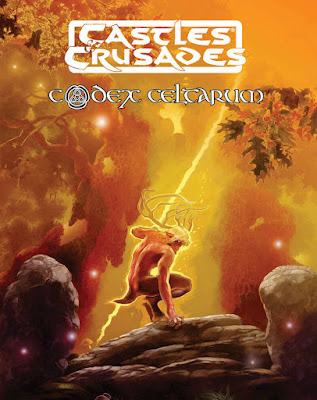 If there was any doubt where Dr. Brian Young's true love lies in this series, the new second printing of the Codex Celtarum should dissolve those. This new book brings the original Codex in line with the other codies in terms of style and feel. This new book is also expanded to 256 pages, up from the previous 178 pages. It is without a doubt also my favorite of the codies.
If there was any doubt where Dr. Brian Young's true love lies in this series, the new second printing of the Codex Celtarum should dissolve those. This new book brings the original Codex in line with the other codies in terms of style and feel. This new book is also expanded to 256 pages, up from the previous 178 pages. It is without a doubt also my favorite of the codies. 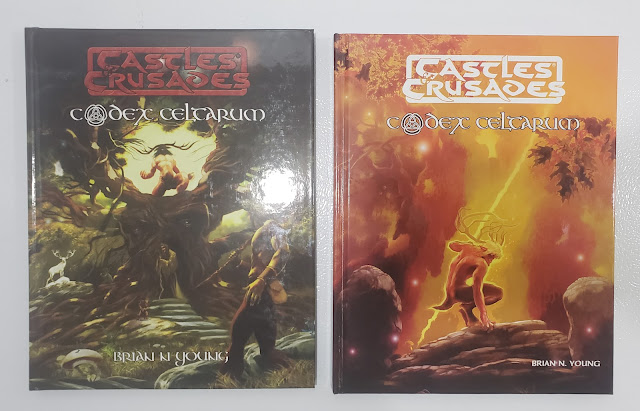 Honestly, Appendices E to J should be combined into a chapter on Celtic Warriors. This is what the other Codices have done.
Honestly, Appendices E to J should be combined into a chapter on Celtic Warriors. This is what the other Codices have done. 